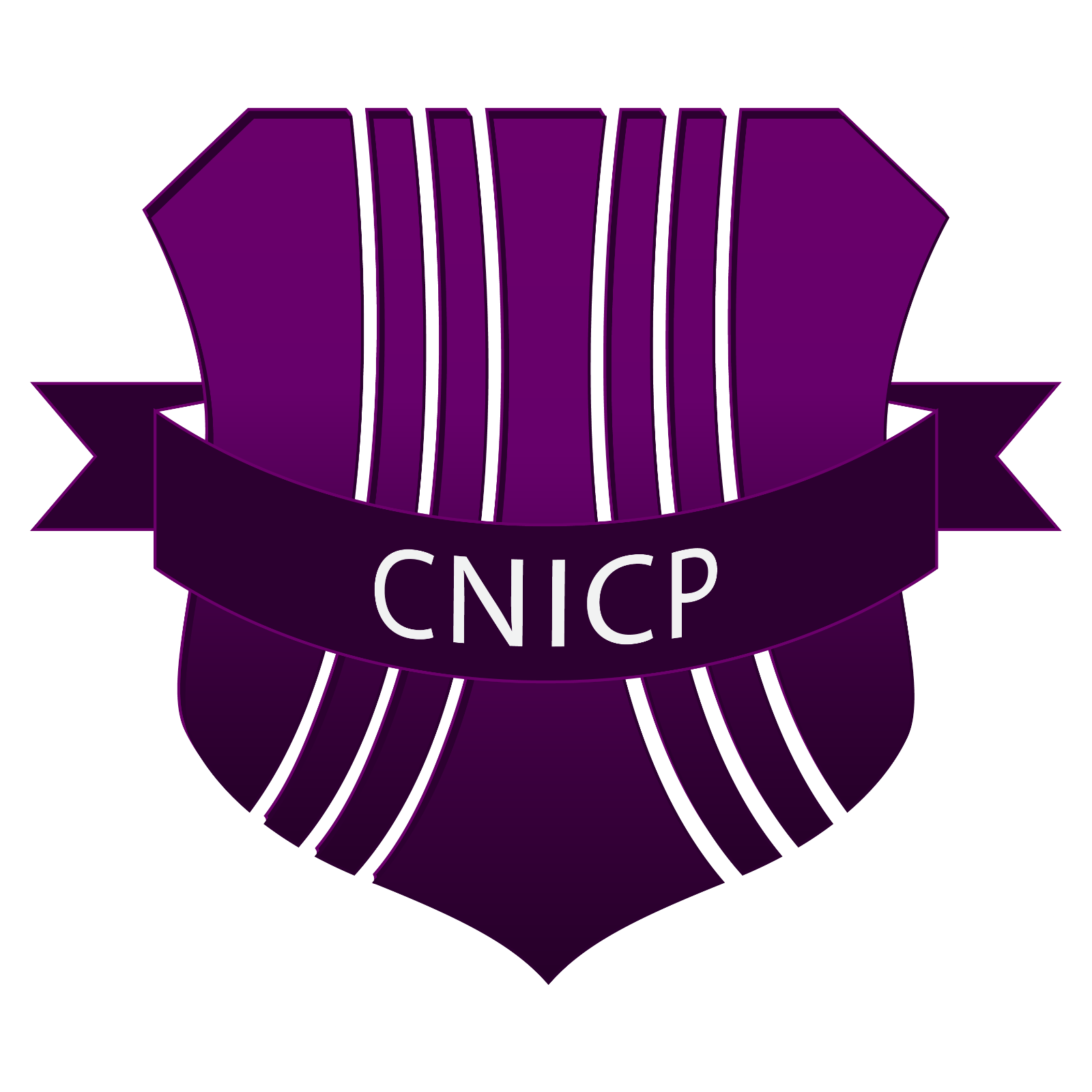CNICP Certification
Certified NIST 800-82 ICS Cybersecurity Professional
Welcome to the "Certified NIST 800-82 ICS Cybersecurity Professional" training, your gateway to mastering the intricacies of securing Industrial Control Systems (ICS) and Supervisory Control and Data Acquisition (SCADA) systems. This course is designed to equip cybersecurity professionals with essential skills and knowledge to safeguard critical infrastructure from evolving cyber threats, following the guidance outlined in NIST Special Publication 800-82.

Why Enroll in This Course?
Enrolling in the "Certified NIST 800-82 ICS Cybersecurity Professional" course is vital for professionals aiming to excel in industrial cybersecurity:
Expert Guidance
Gain in-depth expertise in implementing NIST 800-82 guidelines tailored for securing ICS and SCADA systems, essential for protecting critical infrastructure.
Industry-Relevant Skills
Acquire practical skills in OT (Operational Technology) security risk management, including risk assessment, mitigation strategies, and incident response specific to industrial environments.
Enhanced Career Prospects
Elevate your career with specialized knowledge recognized globally in the field of industrial cybersecurity, addressing the increasing demand for skilled professionals.
Comprehensive Understanding
Explore comprehensive frameworks and best practices for deploying cybersecurity controls, managing risks, and ensuring compliance with regulatory requirements.
Impactful Contributions
Equip yourself to make a significant impact by safeguarding industrial processes, enhancing operational resilience, and defending against cyber threats that could compromise safety and efficiency.
Support Consulting
Lorem Ipsum is simply dummy text of the printing and typesetting industry. Lorem Ipsum has been the industry's standard dummy text ever since the 1500s.

Secure Your Future in NIST 800-82 ICS Cybersecurity
Prepare to lead in the protection of critical infrastructure with the "Certified NIST 800-82 ICS Cybersecurity Professional" training. Join us in mastering the essential skills needed to secure Industrial Control Systems and contribute to a secure and resilient industrial ecosystem.
Stay tuned for fresh content, twice a day! Elevate your learning experience with our daily course video uploads.
Course Overview
What You'll Learn
Module 1:
NIST 800-82 Cybersecurity Professional
NIST Special Publication 800-82 provides guidance specifically tailored for securing Industrial Control Systems (ICS), including Supervisory Control and Data Acquisition (SCADA) systems and other control system configurations. It is essential for cybersecurity professionals tasked with protecting critical infrastructure from cyber threats.
Module 2:
Briefing of ICS (Industrial Control Systems)
Industrial Control Systems (ICS) are used across various industries to monitor and control physical processes, such as manufacturing, energy production, and water treatment. These systems integrate hardware, software, and networking components to automate and optimize industrial operations.
Module 3:
Difference between ICS and DCS (Distributed Control Systems)
- ICS (Industrial Control Systems): Encompasses a wide range of control systems used in industrial environments to monitor and control processes. It includes systems like Programmable Logic Controllers (PLCs), Distributed Control Systems (DCS), and SCADA systems.
- DCS (Distributed Control Systems): Specifically refers to control systems used in large-scale industrial processes where multiple controllers are distributed throughout the system. DCS typically includes centralized supervisory control for monitoring and managing processes.
Module 4:
Briefing of PLC (Programmable Logic Controller) and RTU (Remote Terminal Unit)
- PLC (Programmable Logic Controller): A specialized computer used to automate electromechanical processes in industrial environments. PLCs are programmable and interact with sensors, actuators, and other devices to control machinery and processes.
- RTU (Remote Terminal Unit): Similar to PLCs, RTUs are used in remote locations to collect data from sensors and control devices. They often interface with SCADA systems to monitor and manage distributed assets and facilities.
Module 5:
ICS Architecture
ICS architecture typically includes:
- Field Devices: Sensors, actuators, and instruments that interact directly with physical processes.
- PLCs/RTUs: Controllers that execute control algorithms and manage communication with field devices.
- SCADA (Supervisory Control and Data Acquisition): Software for real-time monitoring, control, and data acquisition from remote devices.
- HMI (Human-Machine Interface): Graphical interface for operators to interact with the control system.
- Network Infrastructure: Communication channels (e.g., LAN, WAN) used for data transmission within the control system.
Module 6:
Introduction of Standards (e.g., NIST 800-82)
NIST 800-82Provides comprehensive guidelines and best practices for securing Industrial Control Systems (ICS). It covers cybersecurity controls, risk management, and incident response to protect critical infrastructure from cyber threats.
Module 7:
OT Security Risk Management
OT (Operational Technology) security risk management involves:
- Risk Assessment: Identifying and evaluating cybersecurity risks specific to OT environments, including vulnerabilities in ICS components and potential impacts on operational continuity.
- Risk Mitigation: Developing and implementing strategies to mitigate identified risks through cybersecurity controls, policies, and procedures.
- Continuous Monitoring: Monitoring OT systems for vulnerabilities, threats, and anomalous activities to detect and respond to cybersecurity incidents promptly.
- Incident Response: Establishing procedures to effectively respond to cybersecurity incidents, minimize impacts, and restore normal operations.
Module 8:
Applying the Risk Management Framework to OT Systems
The Risk Management Framework (RMF) provides a structured approach to managing cybersecurity risks in OT systems:
- Categorization: Identifying and categorizing OT systems based on their criticality and sensitivity to cybersecurity threats.
- Selection: Selecting appropriate security controls and safeguards based on the identified risks and organizational requirements.
- Implementation: Implementing chosen security controls and measures to mitigate identified risks and protect OT systems.
- Assessment: Conducting assessments and tests to evaluate the effectiveness of implemented security controls and their ability to mitigate risks.
- Authorization: Authorizing the operation of OT systems based on the assessment of residual risks and compliance with security requirements.
- Monitoring: Continuous monitoring of OT systems to detect and respond to cybersecurity incidents, and to maintain the effectiveness of security controls over time.
Module 9:
OT Security Capabilities and Tools
OT security capabilities and tools include:
- Access Control: Restricting access to critical OT systems and data based on user roles and responsibilities.
- Network Segmentation: Dividing OT networks into segments to isolate critical systems and control data flow, reducing the impact of cyber attacks.
- Encryption: Securing data in transit and at rest using encryption protocols to prevent unauthorized access and ensure data confidentiality.
- Endpoint Protection: Deploying security measures on endpoints (e.g., PLCs, RTUs) to protect against malware, unauthorized access, and tampering.
- Security Monitoring: Monitoring OT systems and networks for suspicious activities, anomalies, and potential cybersecurity incidents.
- Incident Response: Establishing procedures and protocols to respond promptly to cybersecurity incidents, minimize damage, and restore normal operations.
Module 10:
NIST 800-82 Complete Explanation
NIST Special Publication 800-82 provides comprehensive guidance on securing Industrial Control Systems (ICS) and SCADA systems. It covers cybersecurity controls, risk management principles, and best practices for protecting critical infrastructure from cyber threats. The document is essential for understanding the security requirements and implementing effective cybersecurity measures in industrial environments.
Module 11:
Guidance on Applying the Cybersecurity Framework to OT Systems
The NIST Cybersecurity Framework (CSF) provides guidance on managing and reducing cybersecurity risks in critical infrastructure, including OT systems. It offers a flexible, risk-based approach to cybersecurity that helps organizations identify, protect, detect, respond to, and recover from cyber threats. Applying the CSF to OT systems involves aligning cybersecurity activities with organizational goals and priorities to strengthen overall cybersecurity posture.
Module 12:
Defense-in-Depth Architecture
Defense-in-Depth architecture involves deploying multiple layers of security controls to protect OT systems from cyber threats. It includes:
- Physical Security: Securing physical access to OT facilities and equipment.
- Network Segmentation: Dividing networks into zones to isolate critical assets and control traffic flow.
- Access Control: Restricting access to OT systems based on the principle of least privilege.
- Endpoint Protection: Deploying security measures on devices (e.g., PLCs, RTUs) to prevent unauthorized access and malware infections.
- Monitoring and Logging: Monitoring OT systems for anomalies and logging security events for incident detection and response.
Module 13:
Development and Deployment of an OT Cybersecurity Program
Developing and deploying an OT cybersecurity program involves:
- Risk Assessment: Identifying and prioritizing cybersecurity risks specific to OT environments.
- Security Policy Development: Establishing policies, procedures, and guidelines to govern cybersecurity practices in OT systems.
- Security Controls Implementation: Implementing technical and administrative controls to mitigate identified risks and protect OT assets.
- Training and Awareness: Providing training and raising awareness among OT personnel about cybersecurity threats and best practices.
- Continuous Improvement: Monitoring and evaluating the effectiveness of the cybersecurity program and making necessary adjustments based on emerging threats and vulnerabilities.
Module 14:
Real-Time Audit Checklist
A real-time audit checklist for OT environments includes:
- Network Security: Ensuring proper network segmentation, firewall rules, and access controls.
- Endpoint Security: Verifying security measures on OT devices (e.g., PLCs, RTUs) to protect against unauthorized access and malware.
- Incident Response: Reviewing incident response procedures and readiness to respond to cybersecurity incidents promptly.
- Compliance: Assessing adherence to cybersecurity standards (e.g., NIST 800-82), regulatory requirements, and industry best practices.
- Physical Security: Checking physical access controls and security measures to protect OT facilities and equipment.
Module 15:
Real-Time Manufacturing Audit Assignment and Walkthrough
During a real-time manufacturing audit assignment and walkthrough:
- Assignment: Assigning audit tasks to assess cybersecurity controls and compliance with cybersecurity policies and standards.
- Walkthrough: Conducting physical and digital walkthroughs of manufacturing facilities to observe cybersecurity measures in action.
- Documentation Review: Reviewing cybersecurity policies, procedures, and documentation related to OT security.
- Interviews: Interviewing personnel responsible for cybersecurity, operations, and IT to understand practices and challenges.
- Observation: Observing operational practices, system configurations, and employee awareness of cybersecurity risks and procedures.
How The Course Benifits You

Flexibility & convenience of time and space

Access to expertise & world-class curriculum, comparable to any other globally recognised qualification

Optimal pricing with maximum value; achieving the best costs for efficiency and effectiveness


